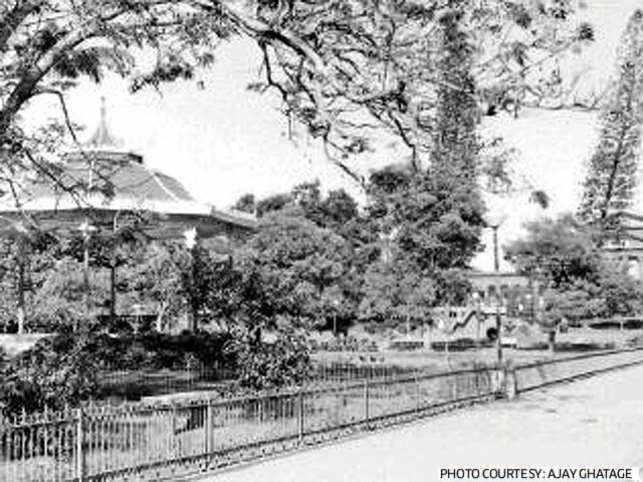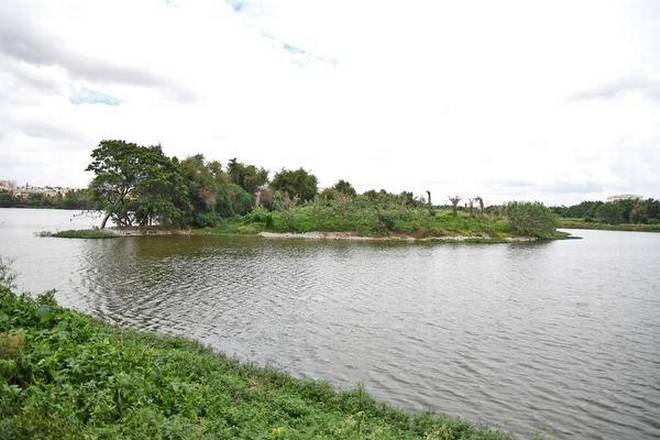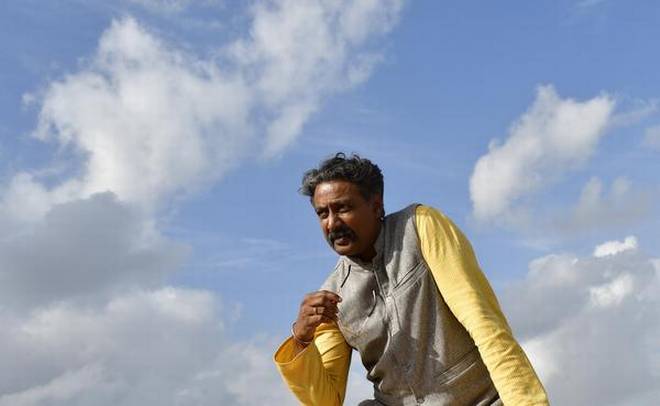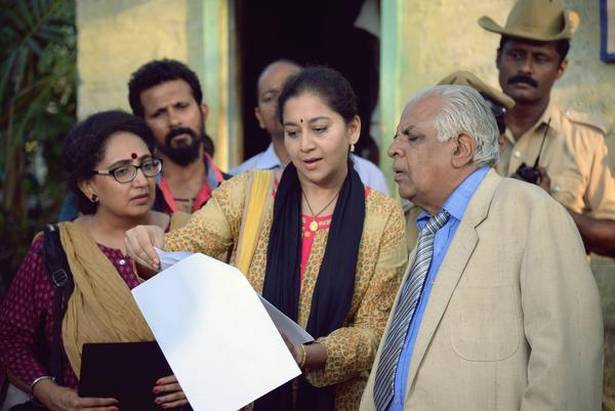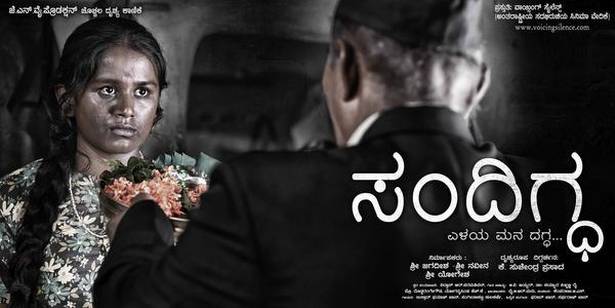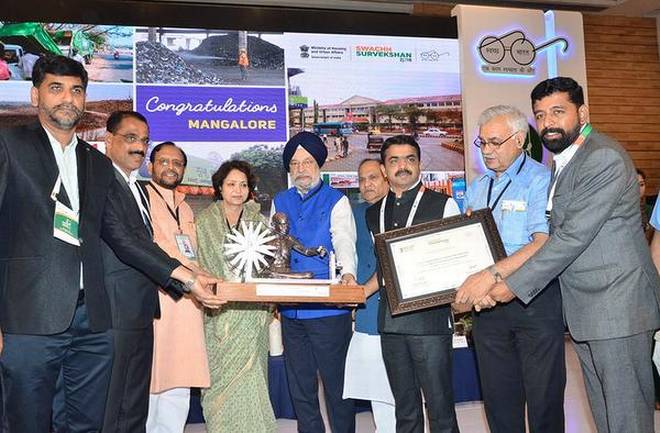Mysuru :
About a quarter of a kilometer from the Bengaluru-Mysuru Highway, on the banks of the Cauvery, lies a cemetery. At the gates, there are the words “Garrison Cemetery, Seringpatam(sic), AD 1800, Latest Burial. 1860” Inside, neat rows of memorials – brick and mortar, washed with lime and shell, stand on the grass.

Though it’s not as well known as other popular tourist destinations at the scene of Tipu Sultan’s last stand, the cemetery sees a few visitors everyday. There, as they walk along the memorials, they would meet Vidhyalakshmi, the caretaker, who makes sure that the gravestones are kept clean and well maintained. She also takes care of the guest book, an analog custom that seems quaintly appropriate to the place.
Some of the graves are those of the members the Meuron regiment, who fought in the fourth Anglo Mysore War (1799) – where Wellington faced off against Tipu Sultan for the final time.
The Meuron Story
Charles-Daniel de Meuron was the eldest son of a tanner and merchant. In 1755, at the age of seventeen, he joined the Swiss Régiment de Hallwyl. He saw several engagements in the seven years war and rose from ensign to the rank of colonel in 1778, fighting, among others, the English.
In 1781, at the behest of the French, Meuron created his own, eponymous unit. After an eventful period in the Cape of Good Hope, Meuron returned to Europe to retrieve his arrears from his employers, the house of Zeeland. However, with the situation in Europe getting even more tangled as a result of the French Revolution, Meuron decided to get closer to the British, who he saw as the rising power in Europe and around the world. In 1798, the Meuron joined the British, and his regiment – two battalions of five companies of infantry – became part of the British army.
The Meuron regiment distinguished in the Anglo-Mysore War, and Wellington, in an 1805 letter, wrote, “I had under my command for some years the Swiss Regiment de Meuron, which, for good conduct, discipline, and other military qualities, was not surpassed by the English Regiments”.
Meuron himself died in 1806, a lieutenant general in the British army, but his regiment lived on, moving from India to America, where it took part in the war of 1812, and was finally disbanded in 1816.
The soldiers from the Meuron regiment who fought in the fourth Anglo-Mysore War were buried in the Garrison Cemetery and later, their family members who stayed on in India.
Restoration
Almost two centuries later, in 2002, a descendent of de Meuron returned to Mysuru. Louis Dominique de Meuron, along with his wife Monique, was looking for traces of his famous ancestor. At this time, the Garrison Cemetery was in poor shape. According to a report “dense growth of vegetation (was) hiding many of the tombs and making it almost impossible to even tread on some parts of the site. Some tombs were found to be either totally or partially demolished”.
Louis Dominique de Meuron became determined to do something about the restoration of the cemetery. The couple met conservation architect Ravindra Gundu Rao from Mysuru and commissioned him to undertake the restoration of the cemetery. The project proceeded with the approval of Karnataka’s Department of Heritage, with the then director, Venkatesh Machaknur, taking a personal interest in the restoration. The late MS Nagaraja Rao, who was the former Director General of the Archaeological Survey of India, together with Dr Gayathri, the retired Deputy Director of the Department of Archaeology and Museums, were also members of the advisory committee.
For Gundu Rao, this was “one of the most cherished endeavours” he has undertaken. The project involved a total umber of 12-18 masons, craftsmen and other skilled workers. The restoration was carried out using mostly materials available in the late eighteenth century – lime from a local quarry, brick, jaggery syrup and tree gum. The restoration was completed in 2007.
The Next Generation
Over the past decade, the de Meuron family have remained involved in the upkeep and maintenance of the Garrison Cemetery. Louis Dominique and Monique have passed on, but their son Jean-Léonard and daughters Sophie and Héloïse, have maintained their connection.They have funded the employment, as caretakers of the cemetery, of the late Nagaraj, for about four years, and over the last six years, to date, Vidhyalakshmi, local residents of the Island Town.
And with the passage of time, the weeds have grown, and invading monkeys and falling tree branches have started to damage the restored graves. The de Meurons have decided that it is time for another, smaller, restoration project. Ravindra Gundu Rao, because of his knowledge of the project – and his own personal connection – is contributing time and expertise on a voluntary basis. “Because the affection and consideration I’ve received from the family, this project is a labour of love for me. Within a month of us taking up the restoration project in 2007, Louis Dominique passed away. I had just sent him the first progress report. It was as if this was his last mission in life”, says Gundu Rao.
Revival
The graves need constant maintenance. “ Due to the climatic conditions – the summer and monsoon, especially – the structures tend to deteriorate,” says Gundu Rao. “The tombs are in various styles including obelisk, a Rotunda, Casks, in addition to the conventional Christian forms, while some are even of the Hindu ‘Brindavan’ type. We have to use traditional methods of restoration along with the original materials which were used back in the day for their construction to ensure we consistency”.
Gundu Rao is full of praise for the support given by the de Meuron family. “There are 309 tombs and only nine of them contain de Meuron regiment and family members but they have taken it upon themselves to maintain all the tombs,” he says. He is also critical of the lack of support by the government. “Unfortunately we had to wait for the family to trace the cemetery and protect it while it should have been the duty of our State and the public to preserve it. If it were listed as a protected State monument by the concerned organization, it would do wonders for the cemetery,” he says.
“It is a challenging project. Since the brick and mortar structure is over two centuries old, we must use materials such as lime mortar, natural additives, traditional techniques and tools for the restoration work. Due to weathering, the plastering has been damaged, cracks and fissures which pose an immediate threat to the structure are being looked into,” says Malavika M Murthy, an architect who is supervising and assisting Ravindra Gundu Rao on the project.
Family Matters
The close involvement of the de Meurons is a powerful motivator for the people involved in the project, says Murthy. “They contribute their inputs at every stage and that motivates our team and pushes us to give the project our best. Seeing their emotional connection, the project has become emotional for us too,” she says.
“I am fortunate to be part of such a project which has so much history and emotions associated with it. If we don’t save our heritage, the future generations will be unable to understand the significance and importance of heritage,” notes Nanjundaswamy N, a supervisor at the project site.
“We, as lovers of Indian heritage, find particular interest in (the cemetery’s) conservation because of our family history. Over the last few years, we have supported the ongoing general upkeep of the cemetery through the caretaker, first late Nagaraj, now through Vidhyalakshmi. We strive to keep up the condition that our father, Louis Dominique de Meuron, in collaboration with the Department of Archaeology, Museums and Heritage of the State of Karnataka, achieved in 2007 with their major restoration project,” says Jean-Léonard de Meuron.
So, if you ever find yourself on the road to Mysuru, it may be well worth your while to take a short detour and walk among the graves of the Swiss soldiers who fought and died valiantly in a faraway land. Take a look at the memorials, sign the guestbook and, most of all, remember to tip the caretaker.
source: http://www.timesofindia.indiatimes.com / The Times of India / News> City News> Bangalore News / TNN / by Shivendra Urs / June 24th, 2018
